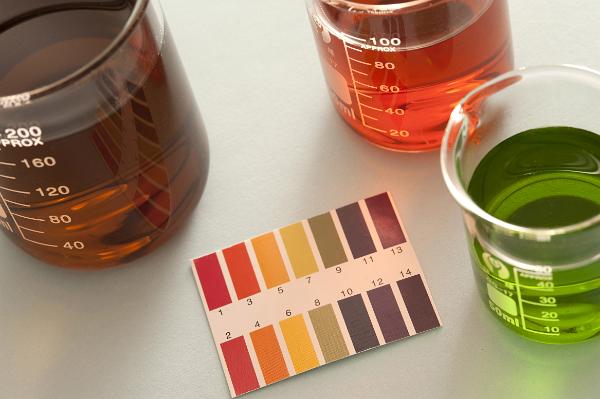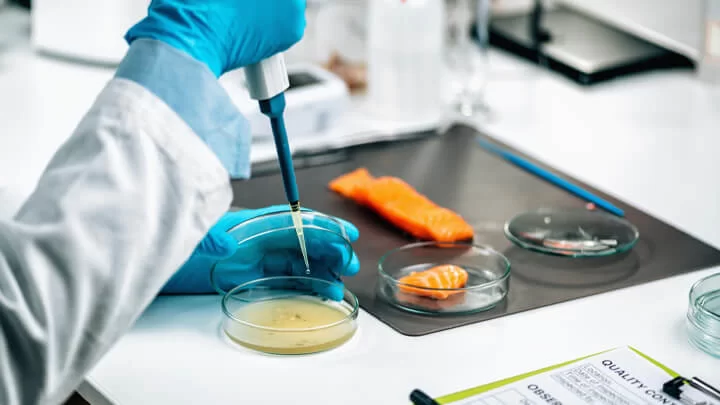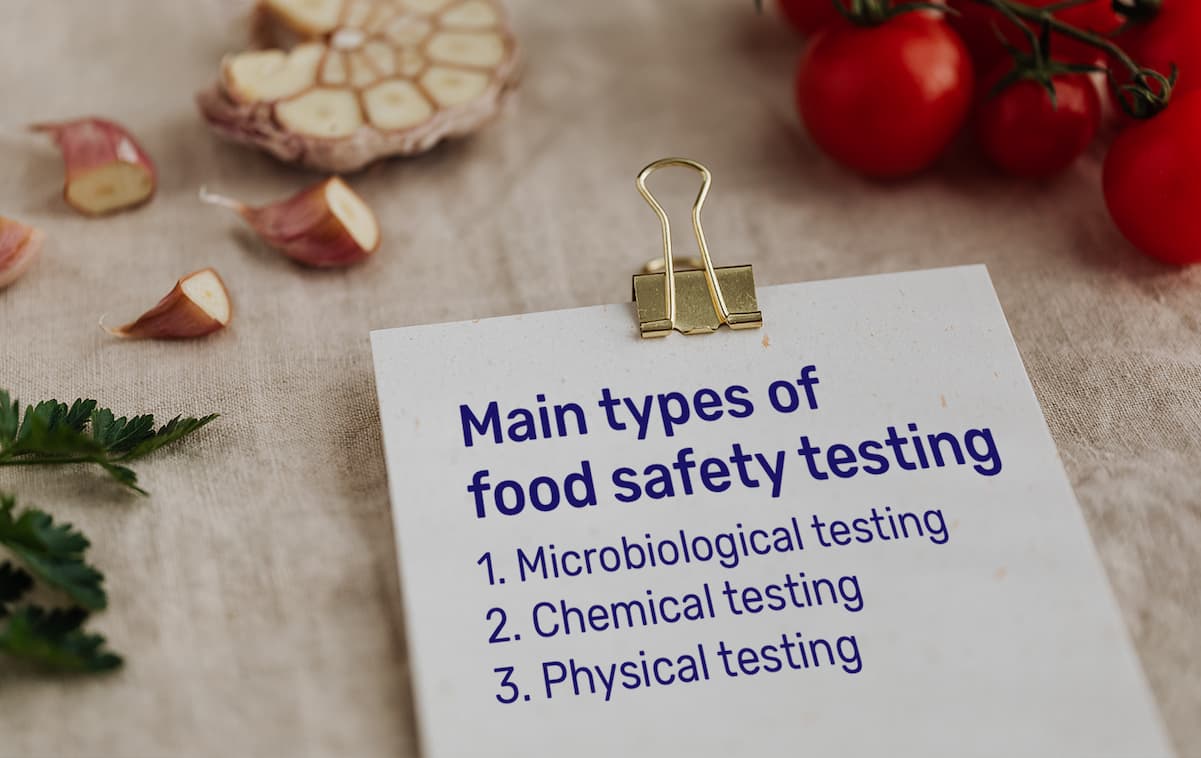Why Are Chemical Indicators Used in Food Testing? Key Benefits and How They Improve Food Safety
When I think about the food I eat every day I want to know it’s safe and exactly what’s in it. That’s where chemical indicators come in. These clever tools help scientists and food experts quickly spot changes or hidden ingredients that could affect our health.
I find it fascinating how a simple color change can reveal so much about what’s really inside a meal or snack. Chemical indicators make food testing faster and more accurate so we can trust what ends up on our plates. Whether it’s checking for allergens or making sure food hasn’t spoiled these indicators play a crucial role in keeping us safe.
Understanding Chemical Indicators in Food Testing

Chemical indicators in food testing detect specific substances or chemical changes by producing measurable signals. I use them to target pH shifts, the presence of contaminants like heavy metals, or trace allergens in food samples. Colorimetric indicators, for example, change hue to signal acid or base content, useful when verifying the freshness of meats or dairy. Fluorescent indicators reveal invisible contaminants by emitting light under certain conditions, often applied in processed foods to check for additives.
The precision of these indicators minimizes guesswork. I select compounds that show reliable responses to minute concentration changes, improving accuracy during routine microbiological or allergen screening. Reliable results protect public health and help food manufacturers maintain labeling standards.
When testing for pesticide residues, I choose enzyme-based indicators that react specifically to organophosphates or carbamates. These indicators often shorten detection time, supporting rapid quality control. Test strips embedded with reagents offer quick, straightforward visual checks, commonly used in field inspections or high-throughput screening.
Distinct indicators enhance food safety:
| Chemical Indicator Type | Primary Application | Example Use Case | Measurable Signal |
|---|---|---|---|
| pH Indicator | Acidity testing | Yogurt and juices | Color change |
| Enzyme-based | Pesticide detection | Vegetable screening | Color, fluorescence |
| Metal ion indicator | Heavy metal screening | Seafood and rice | Visible hue shift |
| Allergen indicator | Allergen presence | Nuts in bakery items | Color or precipitate |
By integrating chemical indicators across multiple testing protocols, I support both routine analysis and rapid, on-site screening, keeping food safer at every supply chain stage.
How Chemical Indicators Work
Chemical indicators signal specific reactions or analytes in food, making complex changes visible or measurable. I rely on these tools for accurate, fast detection in routine tests and food safety screenings.
The Science Behind Chemical Indicators
Chemical indicators operate by reacting with target substances in food to produce measurable signals, most commonly a color change or light emission. I find these reactions stem from well-defined chemical principles such as acid-base behavior or redox reactions. For instance, pH indicators show acidity shifts by changing hue, while enzymatic indicators catalyze a substrate to produce a visible outcome if a contaminant is present. These controlled reactions allow me to confirm the presence or concentration of an analyte like an allergen, spoilage marker, or contaminant.
| Mechanism | Example Indicator | Detects | Visible Change |
|---|---|---|---|
| Acid-base reaction | Litmus | pH level | Blue/red color |
| Redox reaction | Starch-iodine | Oxidizers | Blue-black color |
| Enzyme-catalyzed reaction | Cholinesterase test | Pesticides | Color intensity |
| Fluorescent tagging | Quinine | Heavy metals | Light under UV |
Common Types of Chemical Indicators Used in Food Testing
Chemical indicators used in food testing include colorimetric indicators, enzyme-based assays, and fluorescent markers. I use colorimetric indicators like bromothymol blue to monitor pH in dairy processing. Enzyme-based assays, such as cholinesterase tests, identify pesticide residues in fruits and vegetables. Fluorescent markers help me track contaminants like aflatoxins in nuts and grains, given their ability to emit light under UV exposure.
| Indicator Type | Typical Food Application | What It Detects | Example |
|---|---|---|---|
| Colorimetric | Dairy, beverages | pH, spoilage, additives | Methyl orange |
| Enzyme-based | Fresh produce, grains | Pesticide residues, spoilage enzymes | ELISA test |
| Fluorescent | Nuts, spices, oils | Mycotoxins, heavy metals | Quinine |
| Test strip | Meats, processed foods | Protein, glucose, phosphate | Protein strips |
Each type of chemical indicator fulfills a specific function within food testing, giving me rapid, reliable results needed for informed safety assessments.
Benefits of Using Chemical Indicators in Food Testing

Chemical indicators bring precision, speed, and transparency to food testing. Their integration supports both regulatory compliance and consumer trust.
Ensuring Food Safety and Quality
Food testing with chemical indicators increases accuracy when verifying safety and quality parameters. Indicators such as pH strips and enzyme-based assays enable me to monitor spoilage, fermentation, and freshness in products like dairy, meats, and juices. By reacting to changes in the environment, these indicators signal shifts in quality—such as increased microbial activity or improper storage—enabling early intervention. Quick measurable signals reduce batch loss and safeguard distribution.
Common Examples in Food Safety Monitoring
| Indicator Type | Food Application | Signal Observed | Purpose |
|---|---|---|---|
| pH Strips | Cheese, yogurt | Color change | Acidity control |
| Enzyme-based Assays | Fruits, vegetables | Light emission | Pesticide detection |
| Redox Indicators | Meat, oils | Color change | Spoilage detection |
| Starch-Iodine Test | Grains, sauces | Blue-black hue | Oxidation check |
Detecting Contaminants and Adulterants
Chemical indicators make detecting contaminants and banned additives precise and objective. I identify trace heavy metals, toxins, and unauthorized dyes using colorimetric or fluorescence-based indicators, preventing unapproved ingredients from reaching consumers. Indicators often highlight even minute contaminant presence, supporting regulatory action and recall management.
Examples of Detection Capability
| Contaminant / Adulterant | Indicator Used | Detection Method | Detection Sensitivity |
|---|---|---|---|
| Lead (Pb) | Dithizone reagent | Colorimetric | 10 µg/L |
| Melamine | Fluorescent polymer | Fluorescence | 1 mg/kg |
| Sudan Dye | Chromatographic markers | Colorimetric | 0.05 mg/kg |
| Aflatoxin | Fluorescent agents | Fluorescence | 2 µg/kg |
These technologies help maintain ingredient integrity and regulatory compliance, supporting public health across the food industry.
Limitations and Considerations

Chemical indicators bring vital advantages to food testing, though each method includes trade-offs tied to accuracy, specificity, and operational conditions. I find that understanding these limitations helps interpret indicator results more reliably across any food safety workflow.
Potential Errors and False Readings
Chemical indicators in food testing sometimes generate errors or false readings through several mechanisms:
- Matrix Interference: Ingredients like fats, proteins, or artificial colors in processed foods can affect indicator reactions. For example, high-fat dairy often masks pH strip color shifts.
- Improper Storage: Exposure to moisture or heat degrades test strips and reagents. Expired strips for pesticide tests tend to lose sensitivity, leading to underreported results.
- Operator Misinterpretation: Incorrect reading of color charts or signal thresholds leads to subjective classifications. Reading iodine-starch tests under ambient lighting may obscure faint endpoint shifts.
- Cross-reactivity: Some indicators react with non-target compounds, introducing false positives. For instance, heavy metal detection kits might respond to mineral salts unrelated to contamination.
| Source of Error | Example Indicator | Potential Effect |
|---|---|---|
| Matrix Interference | pH Strips | Masked or shifted results |
| Improper Storage | Enzyme Test Strips | Loss of sensitivity |
| Operator Misinterpretation | Iodine-Starch | Incorrect color reading |
| Cross-reactivity | Heavy Metal Test Kits | False positives |
Best Practices for Accurate Results
- Routine Calibration: I calibrate instruments and validate strips against certified standards every use session for consistent accuracy.
- Controlled Conditions: I conduct tests under stable lighting and temperature, preventing misinterpretation of visual endpoints.
- Duplicate Sampling: Running at least two samples per batch strengthens confidence in results and flags outliers.
- Staff Training: Regular training for personnel using indicator kits reduces subjective misreads and handling mistakes.
- Recordkeeping: I log batch details, lot numbers, and environmental data with each test run, strengthening traceability for audits.
| Practice | Direct Impact |
|---|---|
| Calibration | Reliable and reproducible signals |
| Controlled Conditions | Reduced interpretation variability |
| Duplicate Sampling | Enhanced result validation |
| Staff Training | Fewer process mistakes |
| Recordkeeping | Audit-friendly data traceability |
The Future of Chemical Indicators in Food Testing
Emerging technologies are advancing the scope and precision of chemical indicators across the food industry. Digital sensors, nanotechnology, and AI-driven analytics now integrate with chemical indicators to enable real-time, high-throughput testing. I see food manufacturers using sensor arrays and smart labels, which transmit information about spoilage, allergen presence, or contamination directly to digital devices. These platforms speed up safety checks, especially in perishable goods such as dairy, seafood, and fresh produce.
Miniaturized chemical indicators, such as nanosensors and microfluidic chips, increase detection sensitivity down to parts per billion. I find these devices enhance early identification of toxins, pathogens, and illegal additives like melamine in imported grains. Wearable indicators, embedded in conveyor belts or packaging, now automate hazard detection throughout the supply chain.
Table 1 summarizes innovations in indicator technology:
| Technology | Use Case | Detection Limit | Example Application |
|---|---|---|---|
| Nanosensors | Heavy metal detection | <1 ppb | Mercury in seafood |
| Microfluidic chips | Multi-allergen screening | <5 ppm | Peanut residues in snacks |
| Fluorescent labels | Pathogen tracking | <100 CFU/g | Salmonella in poultry |
| Digital smart labels | Spoilage indication | Real-time | Dairy product shelf life |
| Enzyme biosensors | Pesticide residue quantification | <0.01 ppm | Organophosphates in produce |
AI algorithms now interpret chemical indicator results, reducing human error in interpretation. Advanced image analysis tools connected to smartphones read color changes and output digital reports. In high-volume settings, robotics and indicator-embedded workflows streamline compliance for global food processors.
Regulatory agencies, including the FDA and EFSA, now recognize these technologies in product approval and compliance standards. Novel indicators, once validated, rapidly transition into routine quality assurance. The convergence of AI, IoT, and nanotech transforms chemical food testing into a predictive, preventative discipline, sharply reducing incidents of foodborne illness and regulatory penalties.
Conclusion
Reflecting on the role of chemical indicators in food testing I’m struck by how these tools bridge science and everyday safety. As food systems grow more complex I see these indicators becoming even more vital in identifying risks and ensuring transparency.
Their evolution alongside digital and AI technologies promises a future where food safety checks are not just routine but highly predictive. I’m excited to watch these innovations shape a safer food landscape for everyone.
Frequently Asked Questions
What are chemical indicators in food safety?
Chemical indicators are substances or tools used to detect specific chemicals, contaminants, or changes in food. They often signal results through color changes or other measurable cues, helping scientists and manufacturers identify issues like spoiled food, allergens, or banned additives.
How do chemical indicators work in food testing?
Chemical indicators react with target substances in food, such as allergens or contaminants, and produce a clear signal—usually a color change or light emission. This makes it easy to detect dangerous or unwanted compounds quickly and accurately.
What are some common types of chemical indicators for food safety?
Common indicators include litmus paper for pH testing, enzyme-based test strips for pesticide detection, and colorimetric or fluorescent sensors for identifying heavy metals or allergens. Each is designed for specific substances or types of contaminants.
Why are chemical indicators important in the food industry?
Chemical indicators enhance food safety by providing rapid and reliable testing. They help prevent exposure to harmful ingredients, ensure proper labeling, and support compliance with public health regulations, thereby protecting consumers and brands.
Can chemical indicators detect food allergens?
Yes, certain chemical indicators are tailored to detect trace amounts of allergens in foods. These indicators help identify hidden ingredients that could trigger allergic reactions, ensuring safer products for sensitive consumers.
What are the limitations of chemical indicators in food testing?
While chemical indicators are fast and useful, they may have limitations in accuracy and specificity. Factors like cross-reactivity or improper calibration can lead to false positives or negatives, so careful handling and regular verification are needed.
How are new technologies improving chemical indicators?
Emerging technologies like nanosensors, digital sensors, and AI-driven analytics are making chemical indicators more sensitive, accurate, and automated. These innovations can detect even lower contaminant levels and provide real-time monitoring throughout the food supply chain.
Are chemical indicators recognized by regulatory agencies?
Yes, many chemical indicators and testing methods are approved and recognized by food safety authorities worldwide. As new technologies emerge, agencies are updating standards to include advanced indicators that improve public safety.
How can manufacturers ensure accurate results with chemical indicators?
Manufacturers should follow best practices, including routine calibration of equipment, proper staff training, and regular validation of test methods to ensure that chemical indicators yield reliable and consistent results.
